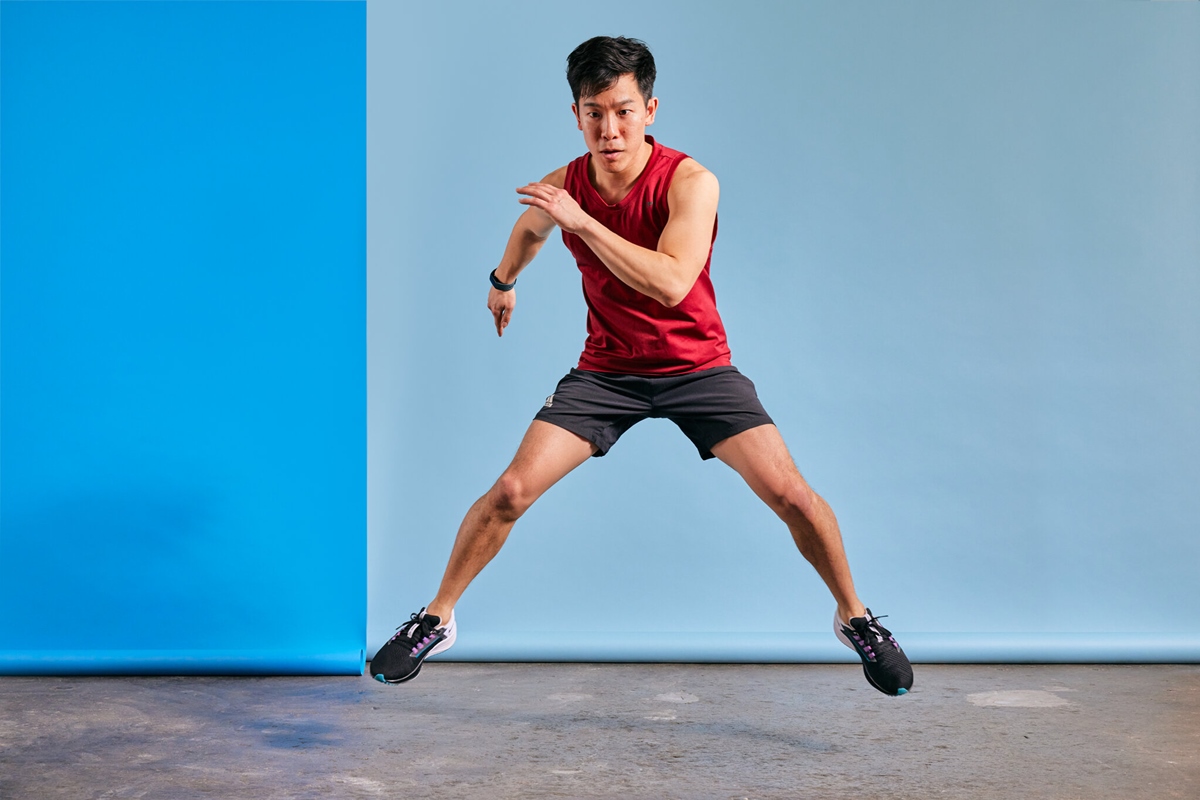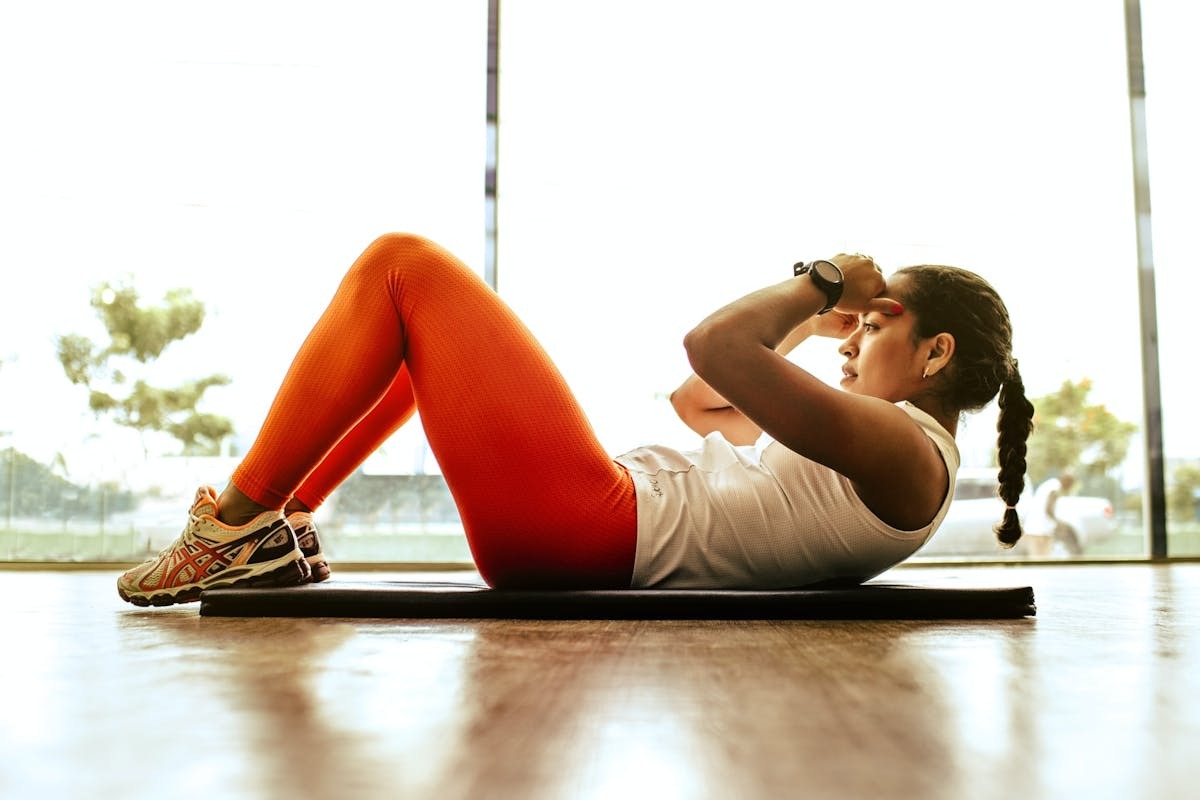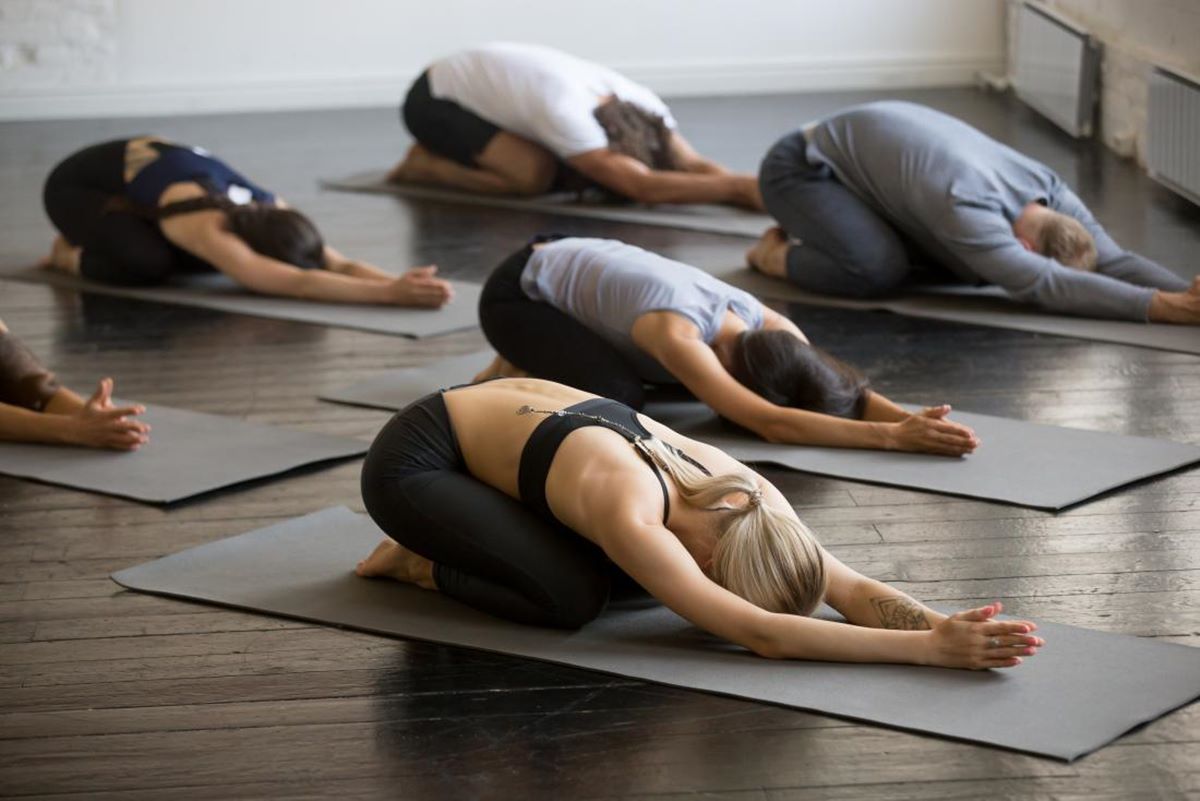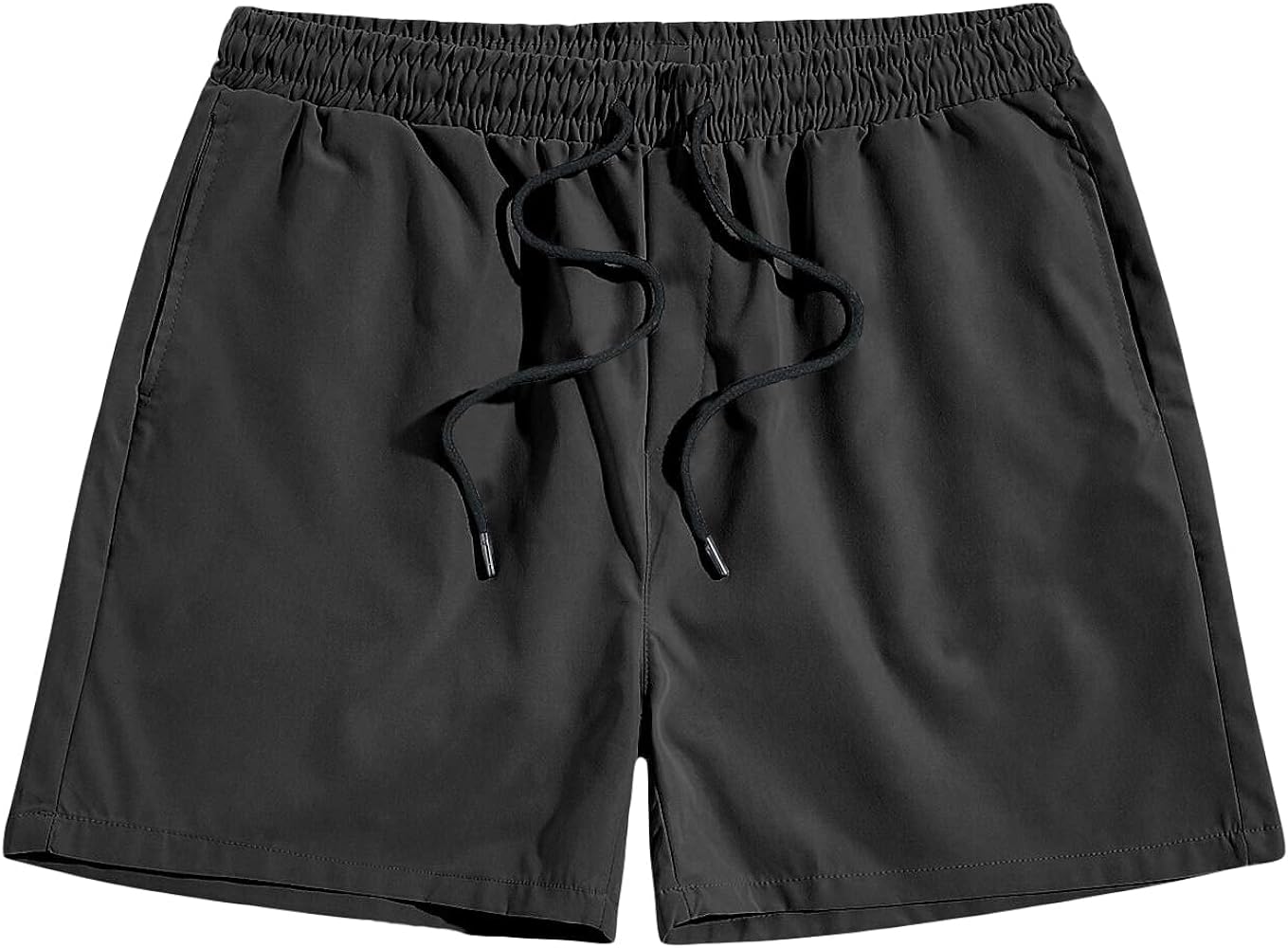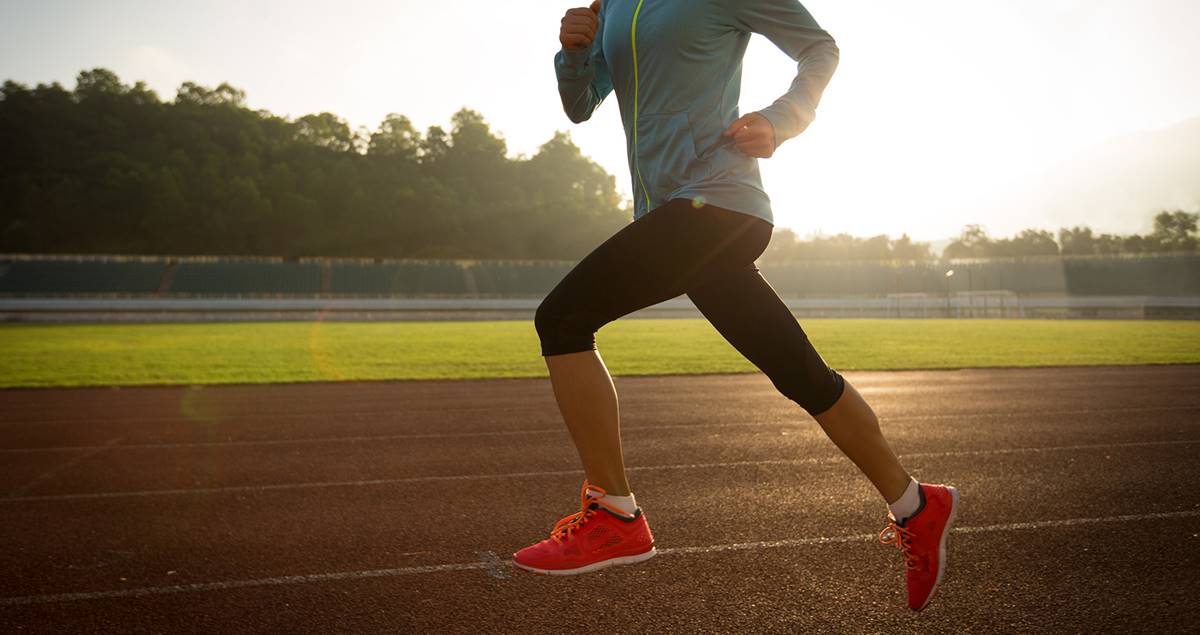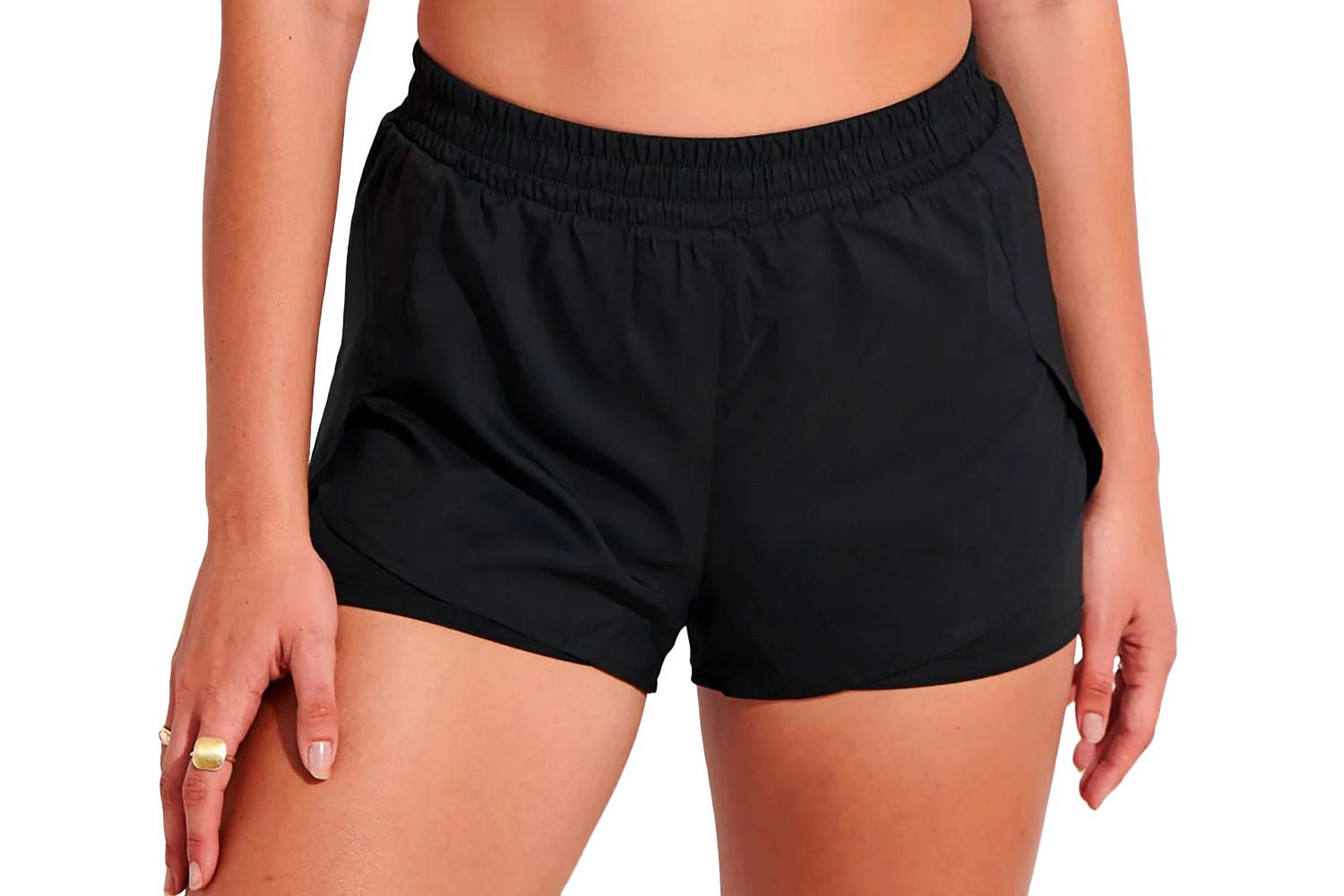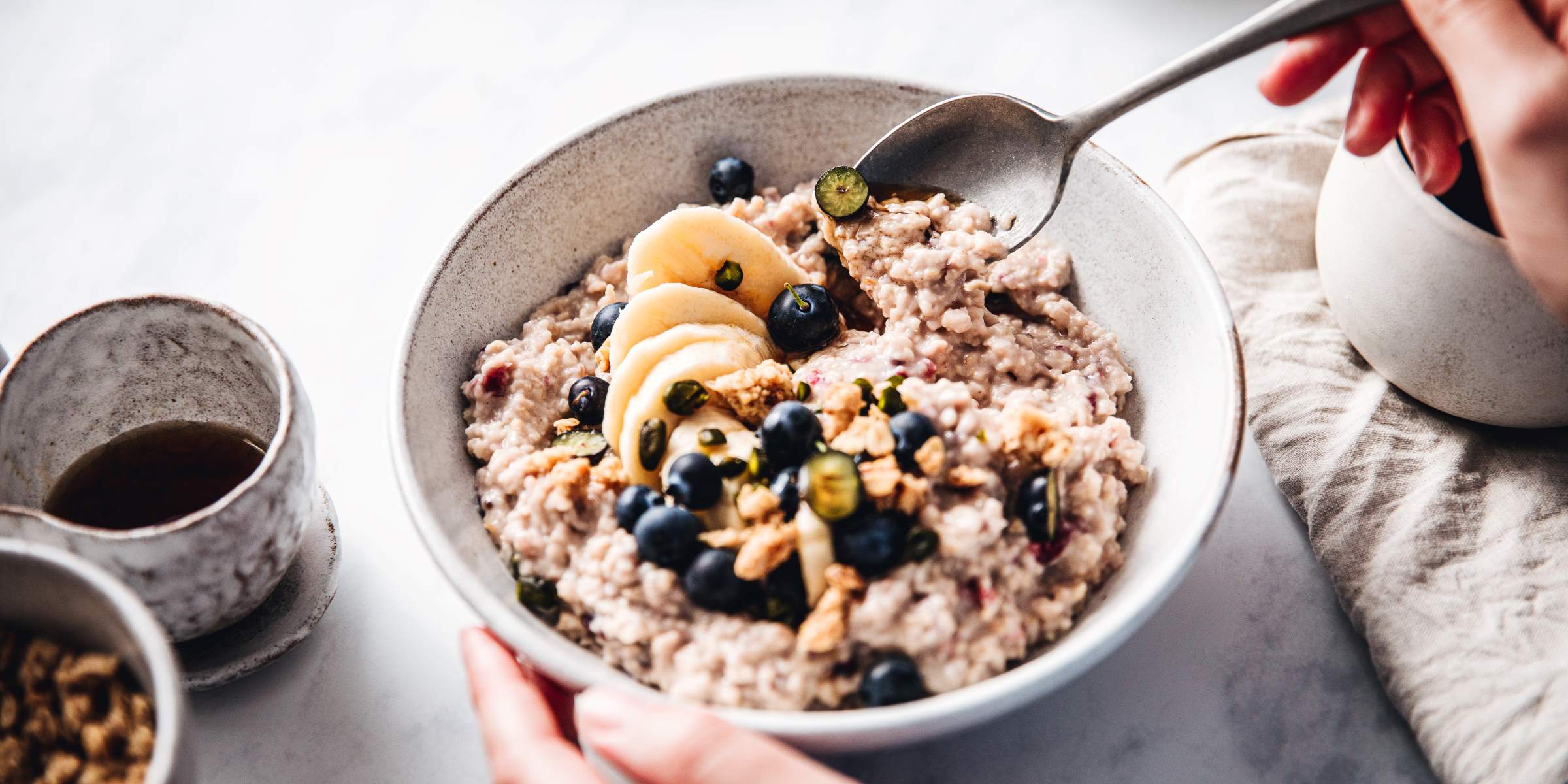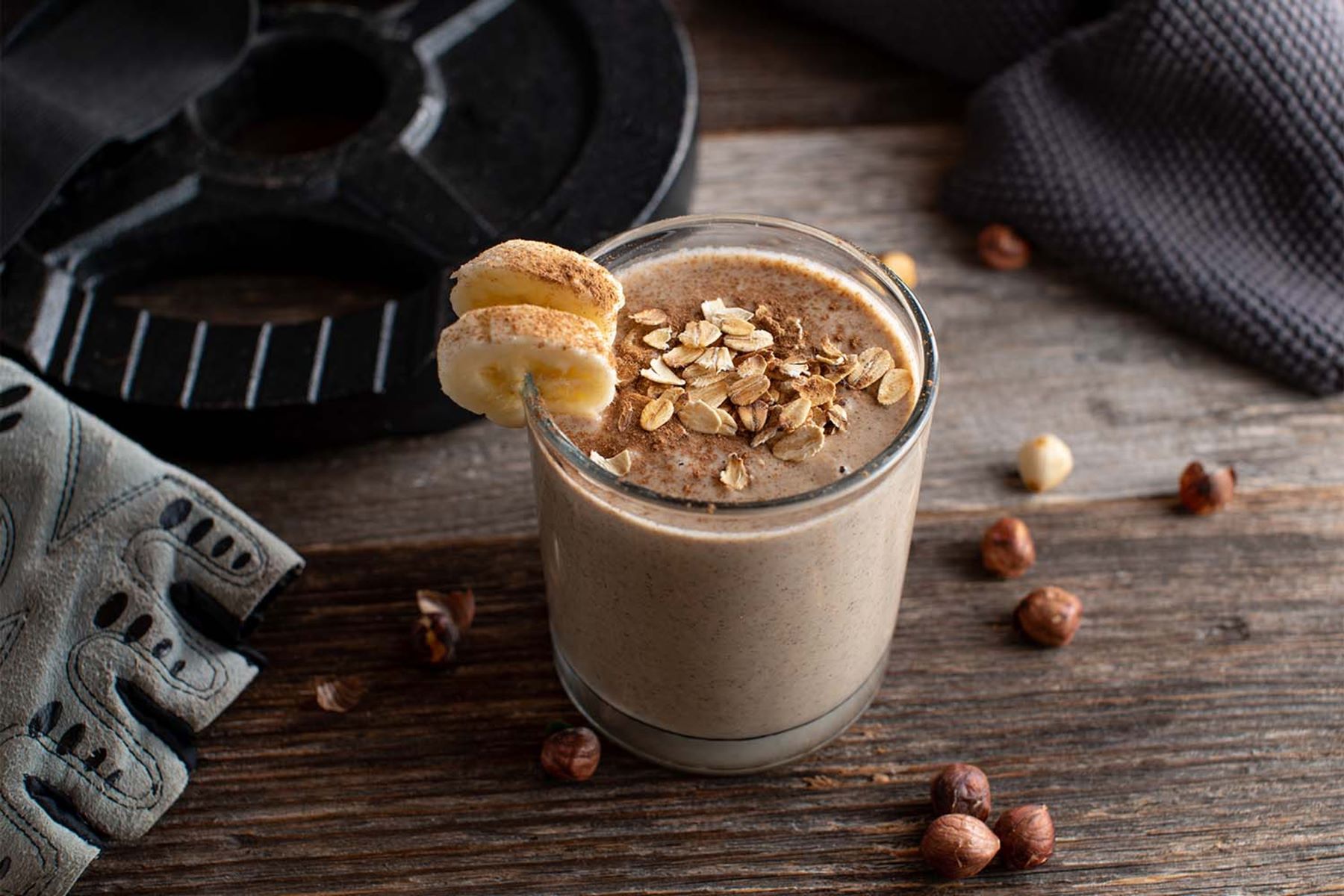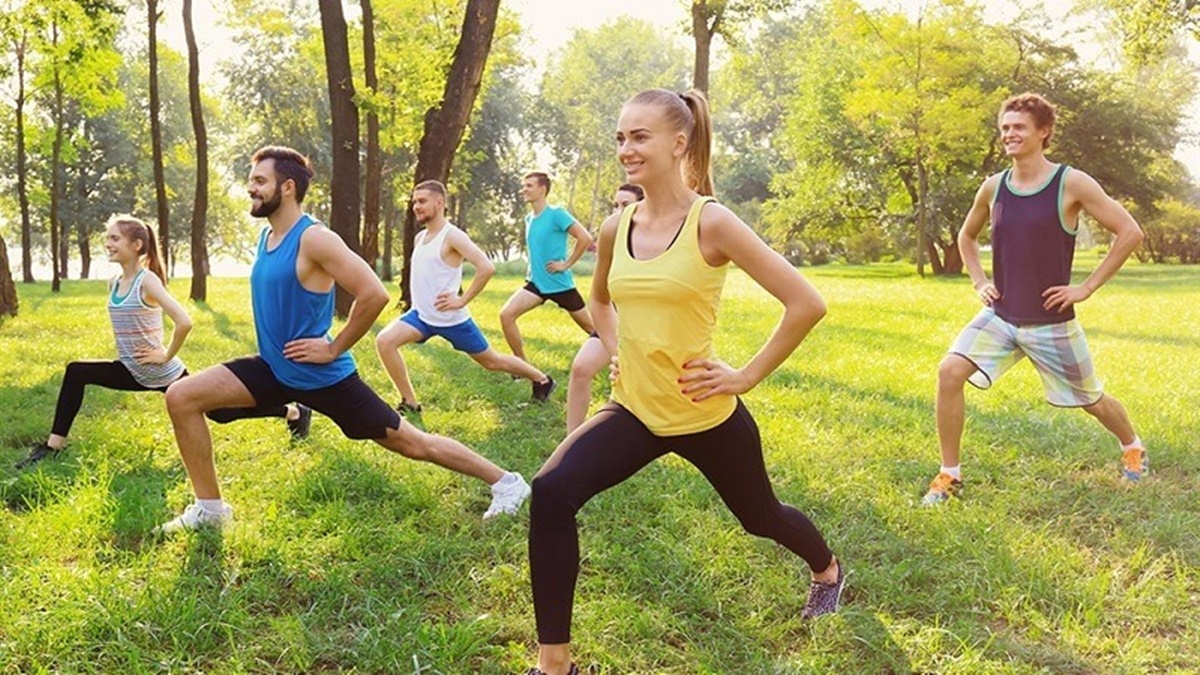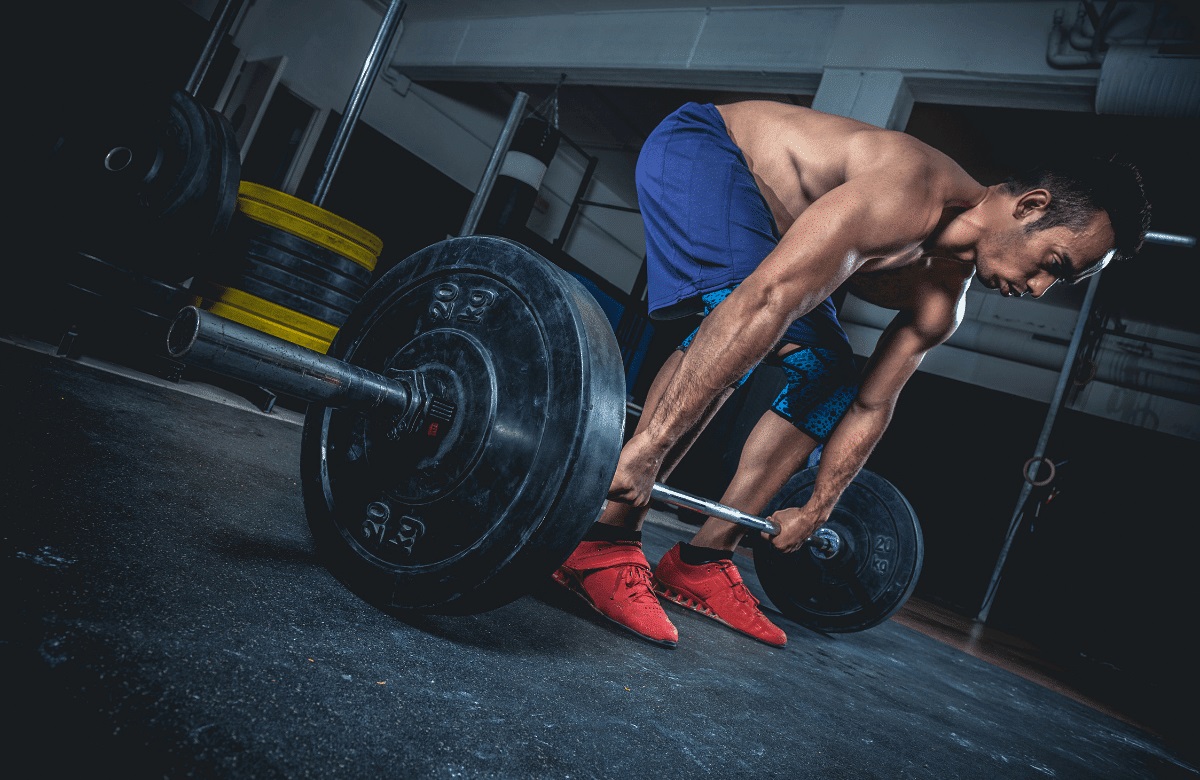

Featured
What Is RDL Exercise
Published: October 4, 2023
Discover the benefits of the RDL exercise and how it can help improve your overall strength and physique. Get featured with this effective workout today!
Introduction
The RDL (Romanian Deadlift) exercise is a highly effective strength training movement that primarily targets the posterior chain muscles of the body, including the hamstrings, glutes, and lower back. It is a compound exercise that involves a hip hinge movement pattern, making it a valuable addition to any fitness routine or strength training program.
RDL, named after the Romanian weightlifting coach Nicu Vlad, focuses on increasing hip mobility, enhancing hamstring and glute strength, and improving overall posterior chain development. It is commonly used by athletes, powerlifters, and fitness enthusiasts to strengthen the muscles required for explosive movements such as deadlifts, squats, and running.
This article will delve deeper into the definition of the RDL exercise, the muscles it targets, proper form and technique, variations, benefits, common mistakes to avoid, as well as precautions and considerations.
Whether you are a beginner or an experienced lifter, understanding the principles and execution of the RDL exercise will equip you with the knowledge to maximize its benefits while minimizing the risk of injury.
So, let’s dive in and discover the incredible benefits and intricacies of the Romanian Deadlift exercise!
Definition of RDL Exercise
The Romanian Deadlift (RDL) is a compound exercise that focuses on hip hinge movement, targeting the posterior chain muscles of the body, including the hamstrings, glutes, and lower back. It is a variation of the conventional deadlift where the emphasis is placed on maintaining tension in the hamstrings throughout the movement.
During the RDL exercise, the lifter starts by holding a barbell or dumbbells with an overhand grip and stands upright. From there, they initiate the movement by pushing their hips back, maintaining a slight bend in their knees, and keeping a flat back position. The goal is to lower the weight while maintaining tension in the hamstrings until the lifter feels a stretch in the back of their legs. They then return to the starting position by actively engaging their glutes and driving their hips forward.
Unlike the conventional deadlift, where the lifter performs a full range of motion from the floor, the RDL typically starts and ends with the weight slightly elevated off the ground. This allows for greater focus on the hip hinge movement and can help in reducing lower back strain.
The RDL exercise can be performed using various equipment, such as barbells, dumbbells, kettlebells, or even resistance bands. It is a versatile exercise that can be modified to suit individual needs and fitness goals.
Muscles targeted by RDL Exercise
The RDL exercise primarily targets the posterior chain muscles of the body. These muscles include the hamstrings, glutes, and lower back. By engaging these muscle groups, the RDL helps to improve overall strength, stability, and performance in various athletic activities and daily movements.
1. Hamstrings: The RDL is known for its ability to effectively target and strengthen the hamstrings. These muscles are responsible for knee flexion and hip extension, making them crucial for activities like running, jumping, and squatting. By focusing on the eccentric lengthening of the hamstrings during the lowering phase of the RDL, the exercise helps to improve muscle control and strength in this area.
2. Glutes: In addition to targeting the hamstrings, the RDL also places a significant emphasis on the gluteal muscles. The glutes, which include the gluteus maximus, medius, and minimus, are responsible for hip extension and contribute to overall lower body strength and power. The RDL’s hip hinge movement pattern helps to activate and strengthen these muscles, leading to improved performance in activities such as running, jumping, and squatting.
3. Lower Back: The RDL also engages the muscles of the lower back, including the erector spinae and multifidus. These muscles play a vital role in maintaining spinal stability and proper posture. During the RDL exercise, the lower back muscles work isometrically to maintain a neutral spine position, ensuring proper alignment and reducing the risk of injury.
In addition to these primary muscle groups, the RDL also works synergistically with other stabilizer muscles, such as the core muscles, quadriceps, and calves, to maintain balance, stability, and control throughout the movement.
By targeting and strengthening these key muscle groups, the RDL exercise helps to improve overall lower body strength, power, and muscular endurance. It is an essential exercise for athletes, powerlifters, and individuals looking to enhance their performance and maintain optimal musculoskeletal health.
Proper Form and Technique
Executing the RDL exercise with proper form and technique is essential to maximize its benefits and minimize the risk of injury. Here are the key steps to follow:
- Starting Position: Begin by standing with your feet hip-width apart and the barbell or dumbbells in front of you on the floor. Maintain a neutral spine, with your shoulders pulled back and your core engaged.
- Grip: Grasp the barbell with an overhand grip slightly wider than shoulder-width apart. Alternatively, you can hold dumbbells with an overhand grip, allowing your arms to hang naturally.
- Hip Hinge: Initiate the movement by pushing your hips back while maintaining a slight bend in your knees. Keep your back flat and your chest up, focusing on maintaining a neutral spine throughout the exercise.
- Lowering the Weight: As you push your hips back, begin to lower the weight by allowing it to slide down your thighs. Keep tension in your hamstrings and avoid rounding your back. Stop when you feel a stretch in your hamstrings or when you reach a comfortable range of motion.
- Drive and Squeeze: To return to the starting position, drive your hips forward, actively engaging your glutes. Keep your core tight and maintain control throughout the movement. Squeeze your glutes at the top of the movement to fully activate the targeted muscle groups.
- Breathing: Breathe in as you lower the weight and exhale as you drive your hips forward. Focus on maintaining a steady breathing pattern throughout the exercise.
- Common Mistakes to Avoid: Be mindful of common mistakes, such as rounding your back, bending your knees too much, or using excessive weight. These errors can lead to poor form and increase the risk of injury. It’s important to prioritize proper technique over lifting heavy weights.
Remember, the key to an effective RDL exercise is to focus on the hip hinge movement, maintaining tension in the hamstrings, and keeping a neutral spine position. Start with lighter weights to master the technique before gradually increasing the intensity.
Variations of RDL Exercise
The RDL exercise can be modified and varied to suit individual preferences, goals, and equipment availability. Here are some popular variations of the RDL:
- Dumbbell RDL: Instead of using a barbell, you can perform the RDL exercise using dumbbells. Hold a dumbbell in each hand with an overhand grip, allowing for greater freedom of movement and a different challenge to your stabilizer muscles.
- Single-Leg RDL: This variation involves performing the RDL exercise while balancing on one leg. It further engages the core and challenges your balance and stability. Hold a dumbbell or kettlebell in one hand and lift the opposite leg off the ground. Keep a slight bend in the knee of the supporting leg and maintain a neutral spine throughout the movement.
- Sumo RDL: In the sumo RDL, you take a wide stance with your feet turned out at an angle and perform the hip hinge movement while holding a barbell or dumbbells. This variation places more emphasis on the inner thigh muscles (adductors) and targets the glutes and hamstrings from a different angle.
- Resistance Band RDL: If you don’t have access to heavy weights, you can perform the RDL exercise using resistance bands. Attach one end of the band to a stable anchor point and hold the other end in your hands. Step on the band, maintaining tension throughout the movement, and perform the hip hinge motion.
- Swiss Ball RDL: This variation involves performing the RDL exercise while balancing your upper back on a Swiss ball. This adds an element of instability, engaging your core and challenging your balance. Hold a dumbbell or kettlebell in each hand and perform the hip hinge movement while keeping your feet firmly planted on the ground.
These variations provide different challenges, targeting the primary muscle groups of the RDL exercise in slightly different ways. Incorporating these variations into your training routine can help to overcome plateaus, add variety, and keep your workouts engaging and effective.
Benefits of RDL Exercise
The RDL exercise offers numerous benefits for individuals of all fitness levels. Incorporating this compound movement into your strength training routine can yield the following advantages:
- Hamstring and Glute Strength: The RDL targets the hamstrings and glutes, helping to strengthen these muscle groups. Increased hamstring and glute strength can enhance athletic performance, improve lower body power, and contribute to better overall movement mechanics.
- Injury Prevention: The RDL exercise helps to improve hip and hamstring mobility, which can aid in preventing injuries, such as strains and pulls. It also strengthens the lower back, leading to improved spinal stability and reduced risk of lower-back-related issues.
- Functional Movement: The hip hinge movement pattern utilized in the RDL exercise mimics movements performed in daily activities, such as bending over, picking up objects, and lifting. By training the body to perform this movement correctly and efficiently, the RDL can improve overall functional strength and make everyday tasks feel easier.
- Improved Posture: The RDL helps to strengthen the muscles responsible for proper posture, such as the erector spinae and lower back muscles. Regularly performing the RDL exercise can help correct postural imbalances and promote a more upright and aligned posture.
- Core Activation: The RDL requires core stability to maintain balance and control throughout the movement. This exercise activates the muscles of the core, including the abdominals and obliques, contributing to improved core strength and stability.
- Increased Flexibility: The RDL places a stretch on the hamstrings and promotes hip mobility. Over time, this can lead to increased flexibility in these areas, assisting in movements such as squatting, deadlifting, and running.
- Enhanced Athletic Performance: The RDL exercise directly targets the muscles used in explosive and powerful movements like jumping and sprinting. By strengthening the hamstrings, glutes, and lower back, the RDL can improve athletic performance, agility, and speed.
Whether your goal is muscle hypertrophy, increased strength, improved mobility, or enhanced athletic performance, the RDL exercise offers a range of benefits that can positively impact your fitness journey.
Common Mistakes to Avoid
While the Romanian Deadlift (RDL) exercise is highly effective when done correctly, there are some common mistakes you should be aware of and avoid. By understanding these errors, you can ensure that you get the most out of your RDL workouts and reduce the risk of injury. Here are some common mistakes to watch out for:
- Rounding the Back: One of the most significant mistakes during the RDL is rounding the back. This not only reduces the effectiveness of the exercise but also puts unnecessary strain on the lower back. Remember to maintain a neutral spine throughout the movement, keeping your back flat and core engaged.
- Bending the Knees Too Much: While a slight knee bend is necessary during the RDL, excessively bending the knees can shift the focus away from the targeted muscles. Keep a slight bend in your knees, focusing on pushing your hips back and feeling the stretch in your hamstrings.
- Using Excessive Weight: It’s essential to choose an appropriate weight that allows you to maintain proper form and technique throughout the exercise. Using weights that are too heavy can compromise your form and increase the risk of injury. Start with lighter weights and gradually increase the load as your strength and technique improve.
- Improper Hip Hinge: Failing to utilize the correct hip hinge movement pattern is another common mistake. Make sure to push your hips back, maintaining a straight line from your head to your tailbone. Avoid bending at the waist, as this can lead to improper muscle activation and place undue stress on the lower back.
- Not Controlling the Descent: Many individuals make the mistake of allowing the weight to drop quickly during the descent phase of the RDL. This not only diminishes the effectiveness of the exercise but also increases the risk of injury. Control the movement by actively engaging your muscles and lowering the weight under control.
- Ignoring Core Activation: Neglecting to engage your core muscles throughout the exercise can compromise your stability and form. Remember to brace your core and maintain a strong, stable midsection during the RDL. This will enhance your balance, protect your spine, and maximize the effectiveness of the exercise.
Being mindful of these common mistakes and focusing on proper form and technique will help you optimize your RDL workouts and achieve the desired results safely and effectively.
Precautions and Considerations
While the Romanian Deadlift (RDL) exercise offers numerous benefits, it is important to take certain precautions and considerations to ensure a safe and effective workout. Here are some key points to keep in mind:
- Proper Warm-Up: Prior to performing the RDL, it is crucial to warm up adequately. This helps to increase blood flow, improve muscle elasticity, and reduce the risk of injury. Incorporate dynamic stretches and light cardiovascular exercises to prepare your body for the workout.
- Progression: Like any exercise, it is important to progress gradually with the RDL. Start with lighter weights and gradually increase the load as your strength and technique improve. Overloading too quickly can lead to muscle strains, joint stress, and other injuries. Listen to your body and progress at a pace that feels comfortable and safe.
- Proper Breathing: It is essential to maintain a proper breathing pattern during the RDL exercise. Breathe in during the lowering phase and exhale as you drive your hips forward. Focusing on your breath helps to stabilize your core and ensures proper oxygenation of the muscles.
- Individual Limitations: Everyone has different levels of mobility and strength. Be mindful of your individual limitations and work within a range of motion that feels comfortable and safe for you. Avoid pushing through pain or discomfort and modify the exercise if needed to suit your abilities.
- Injury or Musculoskeletal Conditions: If you have a history of injury or any musculoskeletal conditions, such as lower back pain or hamstring strains, it is advisable to consult with a healthcare professional or a qualified trainer before incorporating the RDL into your exercise routine. They can provide guidance on modifications or alternative exercises that suit your specific needs.
- Form and Technique: Emphasize proper form and technique during the RDL exercise. If you are unsure of the correct movement pattern, seek guidance from a qualified fitness professional. Performing the RDL with improper form can lead to muscle imbalances, strain, and injury.
- Rest and Recovery: Allow your body sufficient time to rest and recover between RDL workouts. This will help prevent overuse injuries and promote muscle growth and strength development. Incorporate rest days into your training schedule and prioritize adequate sleep and nutrition.
By taking necessary precautions, listening to your body, and being mindful of your limitations, you can safely and effectively incorporate the RDL exercise into your strength training regimen.
Conclusion
The Romanian Deadlift (RDL) exercise is a powerful compound movement that targets the hamstrings, glutes, and lower back. By incorporating the RDL into your strength training routine, you can experience a wide range of benefits, including improved strength, stability, and athletic performance.
Understanding the proper form and technique of the RDL is essential to ensure maximum effectiveness and minimize the risk of injury. Maintaining a neutral spine, engaging the core, and focusing on the hip hinge movement pattern are key elements to master during this exercise.
Additionally, variations of the RDL, such as the single-leg RDL or dumbbell RDL, can provide additional challenges and target different muscle groups, adding variety to your workouts and preventing plateaus.
It is important to be aware of common mistakes to avoid, such as rounding the back, using excessive weight, or neglecting core activation. By practicing proper form and technique and being mindful of these common errors, you can optimize your RDL workouts and maximize the benefits.
Precautions, such as warming up, progressing gradually, and considering individual limitations, are crucial to ensure a safe and effective RDL exercise. It is always advisable to consult with a healthcare professional or fitness expert if you have any pre-existing musculoskeletal conditions or concerns.
Incorporating the RDL into your fitness routine can lead to improvements in hamstring and glute strength, injury prevention, enhanced posture, and increased athletic performance. By prioritizing proper form, progressing wisely, and taking appropriate precautions, you can reap the rewards of this valuable exercise.
So, start incorporating the RDL into your workouts and experience the transformative benefits it brings to your strength, stability, and overall fitness.
